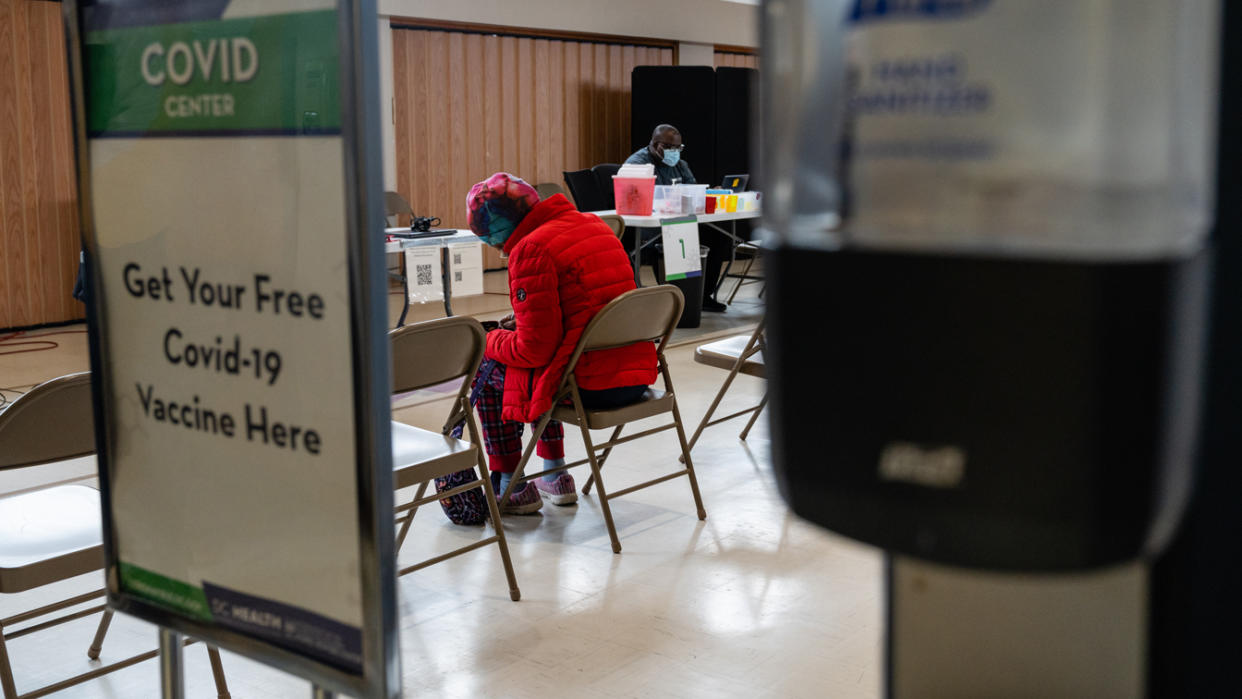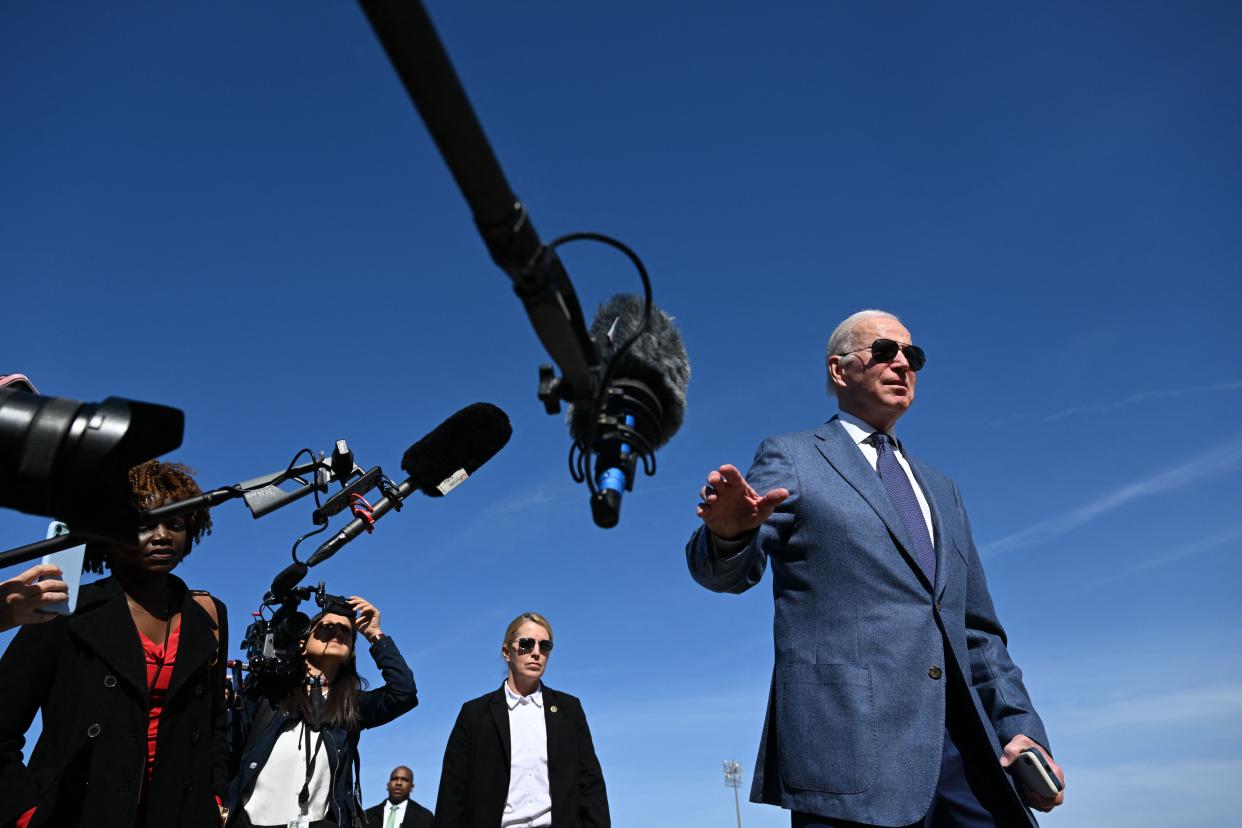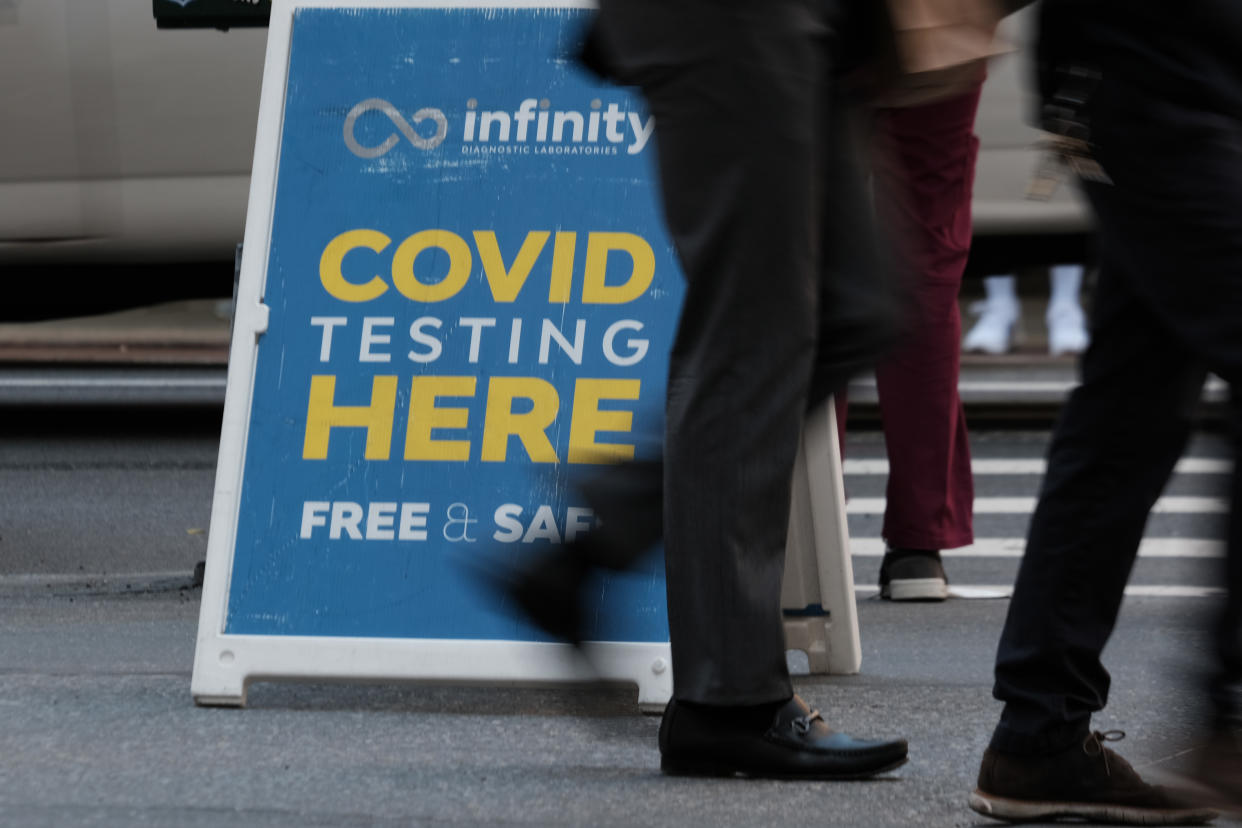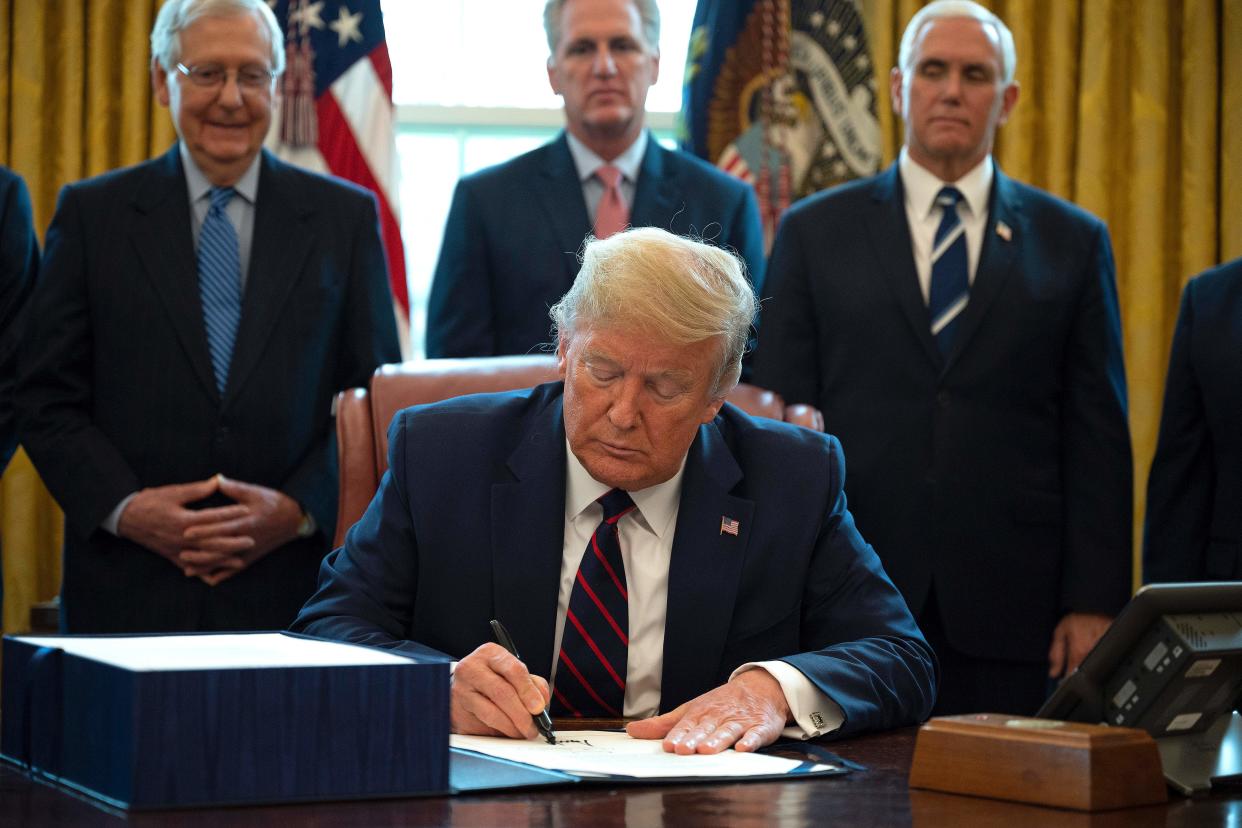Is the COVID pandemic really over?

WASHINGTON — There was no ceremony, as there had been two years ago, when President Biden declared on Independence Day that independence from the coronavirus was at hand. There was no bonfire of vaccination cards on the South Lawn, no celebratory shedding of face masks in Times Square.
Instead, the national emergency proclaimed by President Trump on March 13, 2020, quietly came to a conclusion after 1,124 days, with a Monday evening notice from the White House announcing that Biden had signed a resolution putting the emergency to an end.
The bill Biden signed originated in the Republican-controlled House but also passed in the Senate with the support of 11 Democrats. The White House said the measure was pointless, because the president was preparing to imminently end both the national emergency and the public health emergency. Still, a spokesman said he would sign the bill.
And so, on Monday, he did.
The president did so without a ceremony. On other occasions, he has sought to highlight bipartisan legislation. But not this time. Instead, he was eager to get on with things, to put the virus into the rearview mirror.
The next day, he was heading to Ireland, his ancestral homeland.

Biden’s move was largely symbolic, since the national emergency had little impact on how hospitals and doctors operated (the emergency declaration had mostly to do with waivers for hospitals and health systems).
A parallel health emergency is slated to end next month, cutting off federal funding for some public health measures, including the cost of diagnostic tests and vaccines. “People will have to start paying some money for things they didn’t have to pay for during the emergency,” Jen Kates of the Kaiser Family Foundation explained to CNN.
New restrictions will be imposed on telehealth, a practice that exploded at the start of the pandemic. An estimated 15 million will also lose Medicaid coverage, though most of the disenrolled should be able to qualify for health care through the Affordable Care Act.
Officially, the coronavirus will cease to be a “pandemic” when the World Health Organization (WHO) drops the designation. There are now clear guidelines for doing so, but WHO Director-General Tedros Ghebreyesus is clearly moving in that direction. “I am confident that this year we will be able to say that COVID-19 is over as a public health emergency of international concern,” he said at a briefing last month.
Next month will also see the dissolution of the White House pandemic response team, which used to brief reporters several times each week. There has been no briefing for months. Dr. Anthony Fauci, once the president’s top pandemic adviser, is now retired. Jeff Zients, who once led the pandemic response team, is now the White House chief of staff.

Not that the pandemic is really over, with about 120,000 people across the United States contracting the coronavirus each week and about 1,700 dying weekly from the disease, according to the Centers for Disease Control and Prevention.
“We need to be very clear that just because the national emergency around COVID is coming to an end, that doesn't mean that COVID is no longer an ongoing threat,” public health expert Dr. Leana Wen told Yahoo News. “There are many other diseases that aren't considered pandemics, but are extremely serious — including infectious diseases like HIV and influenza and noninfectious diseases like heart disease and cancer.”
To proponents of the billions that poured into federal relief efforts for the first two years of the pandemic, the winding down of the two emergency declarations reflects a loss of crucial supports to people and communities that had been devastated by the coronavirus.
Some public health officials charge that the Biden administration ceased to take the coronavirus seriously once the cost of doing so became too great. They warn against excessive confidence about what the future may hold. Then there are the millions who suffer from a debilitating, little-understood set of symptoms known as long COVID, which looms as a public health challenge of its own.
“The need for active management of the virus continues. Many thought the pandemic was over in the spring of 2021,” Boston University public health professor Julia Raifman told Yahoo News. “Unfortunately, we were not prepared for new variants, and we lost hundreds of thousands of lives in the following months. By actively tracking COVID, continuing the work to help people get vaccinated and boosted, and having policies and supplies in place to address new variants, we can help ensure we do not see such a high preventable toll again.”

Even the most cautious of Democratic governors had dropped pandemic-related restrictions near the start of 2022, sensing a shift in the public’s mood that could have electoral consequences.
If the administration still has an overarching pandemic policy, it is that the “tools” required to combat the coronavirus — masks and tests, treatments and vaccines —are widely available, to be used at Americans’ own discretion. Many elderly and vulnerable people continue to mask. Booster shots are expected to become an annual rite. Earlier surges have left many households with stockpiles of tests, to be deployed at the first sign of a new infection.
But these are all now a matter of choice — and have been for some time.
To critics, extending the emergencies into 2023 was little more than a means to perpetuate excessive government spending for as long as possible. “The pandemic is over and has been for some time,” said Rep. Mike Gallagher, R-Wis., in a statement that accused the Biden administration of “gross abuses of executive power” that allowed for the spending of “massive sums of taxpayer dollars.”

Trump spent billions on coronavirus relief, too, but he benefited, however briefly, from widespread fears about the damage the coronavirus would do: how many people it would kill, how many workers it would leave without jobs.
By the time the 2020 presidential election approached, the coronavirus had become the razor-edged political and cultural issue it was perhaps always fated to become in a country as divided as the United States. Biden’s own massive coronavirus relief bill received no support from Republicans in Congress. At every level of government, mask and vaccine mandates became the subjects of intense courtroom fights, with the president growing increasingly exasperated at Republican recalcitrance to what was widely believed at the time to be sound public health policy.
The records of governors and presidents, as well as doctors and public health experts, will likely be dissected for years to come, even as most people return to normal. Last year, the Brown University economist Emily Oster, who wrote frequently about the coronavirus, proposed a “pandemic amnesty” that would allow for a measure of grace for all the mistakes and lapses made in the midst of crisis.
“Let’s acknowledge that we made complicated choices in the face of deep uncertainty, and then try to work together to build back and move forward,” she wrote. But the intense pushback her argument received suggested that even as masks come off and vaccine cards fade, bitterness over how the United States handled one of its worst crises will remain.

Much of that accounting will begin with Biden’s predecessor in the Oval Office. Three years to the day before the end of the national emergency, Trump entered the White House press briefing room, for what was, at the time, one of his regular updates to the nation and the press.
As he had done from the start, Trump fulsomely praised his administration’s response. “We’re saving so many lives compared to what it could have been,” Trump said.
Referring to a recent estimate of coronavirus fatalities, Trump predicted that the total number of American fatalities from COVID-19 would be “substantially below 100,000.”
To date, the pandemic has killed 1.1 million Americans.



